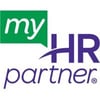We're HR Compliance Experts. Here are 5 Ways Businesses Unknowingly Miss the Mark on Employee Regulations- and How to Make Sure Yours Doesn't.

Most businesses want nothing more than to follow laws related to their employees. Where HR and compliance are concerned, though, good intentions don’t always hack it. Federal, state, and local regulation can trip up businesses for reasons ranging from laws’ complexities to their sheer volume to the fact that some state and local laws are surprisingly difficult to find, let alone follow. Consequences come in the form of fines, back pay, and legal risk, not to mention the stress surrounding it all.
The good news? There are practical ways to offset the majority of employee compliance-related risks. Here are the five compliance-related mistakes we see most often among companies that turn to myHR Partner for help –and ways to avoid them:
1. Non-compliance with state or local law
The emergence of remote work in recent years has tasked a growing number of businesses with a responsibility once reserved for larger enterprises: Complying with state and local employment laws across many jurisdictions. It’s a labor-intensive reality that’s overwhelming businesses, often for one key reason: They don’t know what they don’t know.
Before delving into that point, a refresher:
Employee law is determined in part by the state in which an employee resides – not merely the state where their employer is based. Let’s say a company’s new hire lives in Florida, or an existing employee relocates there. For as long as any one employee resides in the Sunshine State, that business must abide by applicable Florida-specific laws (as well as any local laws and regulations) relative to that employee.
And in the United States, requirements can vary dramatically from one state to the next. California is the most complex, with numerous reporting requirements and mandates touching on everything from meal breaks to disclosures at specific points in an employee life cycle (California OSHA requirements are, in fact, stricter than those at the federal level!). Some California cities and counties then layer on their local laws relating to everything from leave to criminal backgrounds. On the other end of the spectrum is Mississippi, where state laws generally mirror federal law, with one exception: Mississippi requires E-verify, an internet-based program that compares information on an employee’s Form I-9 to records at the Social Security Administration and the U.S. Department of Homeland Security. Between California and Mississippi exists a wide swath of regulatory realities across the remaining states and territories that keep even the most experienced HR pros on their toes.
And the kicker: There’s no one-stop resource for (or best practice on where to find) requirements at state and local levels. While some states and cities outline employment law on government websites, uncovering such legislation often requires contact with multiple state agencies. Even more, sometimes readily available laws have not been distilled for layperson comprehension.
Our team at myHR Partner knows these dilemmas all too well – and has the expertise and experience to solve them. We keep our finger on the pulse of state and local requirements nationwide and alert our clients through easy-to-understand updates that outline the changes and the ways that myHR Partner can help them stay on top of it all.
2. Misclassifying employees as exempt
Employees can be organized into two categories: Exempt or non-exempt, as determined by the Department of Labor (DOL).
In this context, “exempt” indicates exemption from Fair Labor Standards Act (FSLA) overtime regulations, meaning these employees are not entitled to overtime pay. This designation has significant implications not just for overtime, but for other aspects of pay and reporting. However, by some accounts, between 70 and 90 percent of employers get classification wrong.
A quick primer: Very generally speaking, exempt employees hold executive, professional, or administrative roles, and are usually salaried. Non-exempt positions typically take direction from executives and management. Non-exempt employees can be paid on a salary, hourly, or other basis. However, there are exceptions to these guidelines – putting the onus on businesses to turn to the Department of Labor’s Fair Labor Standards Act Duties Test and minimum salary threshold to determine the proper classification for each employee.
Penalties for erroneously misclassifying non-exempt employees vary from state to state. In some cases, the extent of damages is backpay and a one-time fine of a few hundred dollars. In high-regulation New Jersey, however, misclassified employees can seek (in addition to backpay for lost wages) liquidated damages and attorneys fees. If the misclassification is repeated or deemed willful, an employer can even serve jail time.
3. Misclassifying employees as 1099 independent contractors
What do wage laws, income tax, unemployment insurance, Social Security, Form I-9, and workers’ compensation have in common? They’re all impacted when employees are misclassified as independent contractors – the financial cost of which can be extreme. Beyond fines from the DOL, companies that misclassify employees as contractors risk fines levied by the IRS and state agencies, not to mention backpay, the risk of civil lawsuits, and attorneys fees. The IRS is the go-to resource for ensuring that hires are properly classified.
4. Not checking federal requirements as they grow
Some federal requirements kick in only when a company’s employment population reaches a certain size. Small businesses in particular are wise to note how obligations change as headcount grows:
At the federal level, the Family and Medical Leave Act (FMLA) and Affordable Care Act (ACA) apply once a private-sector company reaches fifty employees for twenty weeks straight.
As such, private-sector companies approaching fifty employees are wise to start researching and preparing for both FMLA and ACA. ACA implementation in particular can be a heavy lift; companies should give themselves ample time to study up and prepare.
EEO-1 reporting – the mandatory collection of data from private sector employers – generally applies once companies reach one hundred employees. However, there are exceptions. Federal government contractors, for example, are beholden to different criteria. myHR Partner has seen businesses realize EEO-1 obligations only after reaching the 100-employee mark, leading to a labor-intensive reconciliation process. Businesses teetering around this milestone should waste no time examining EEO-1 requirements and their implications for human resource compliance.
5. Using outdated legal documents and communication
By design, regulation-related fine print characterizes legal documents such as severance agreements, non-compete agreements, and employment contracts. Many states and municipalities, for example, have adopted severe restrictions in recent years for non-compete clauses. Some even ban non-competes outright – regulation that’s prone to change and that must be reflected accurately in documents intended as binding.
For this reason, a business should never take a “set and forget” approach to legal documents, which can become unenforceable if outdated. Have an attorney review existing legal documents at a regular clip. After all, something that was compliant a few years ago may not be in step with regulation today.
While it might seem more benign at face value, outdated employee communication can also put businesses in the crosshairs. Employees often assume that employee handbooks, workplace posters, and other documents outlining regulations and guidelines are up-to-date. Gaps between these communications and current regulations can cause confusion and a mistrust of management; at worst, it’s a legal risk.
Is compliance management more than your business has the resources or desire to navigate? Turn to myHR Partner.
myHR Partner’s compliance management services help ensure that your business dodges common compliance mistakes by staying abreast of all applicable federal, state, and local laws.
Reach out today for a free myHR Partner consultation.
Topics discussed
Related Posts


